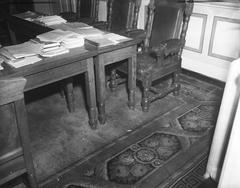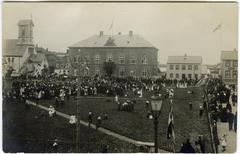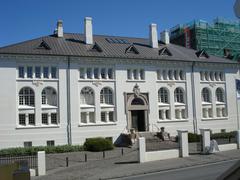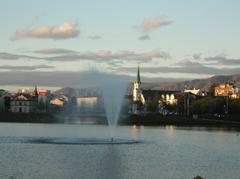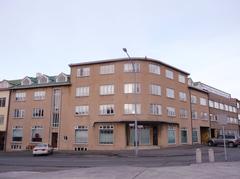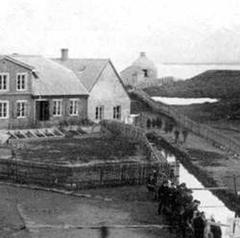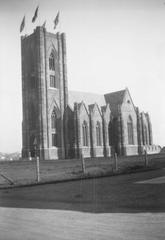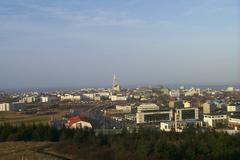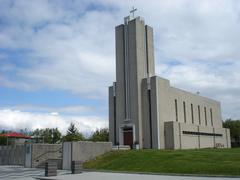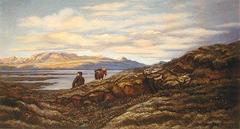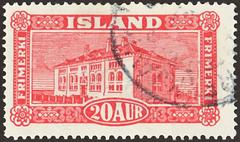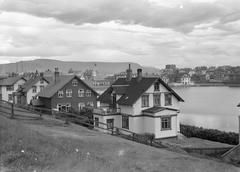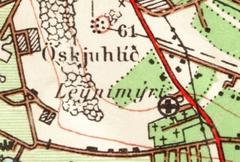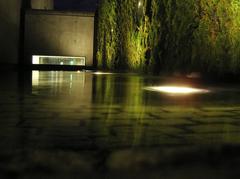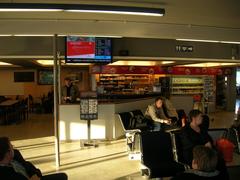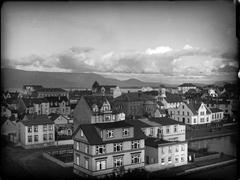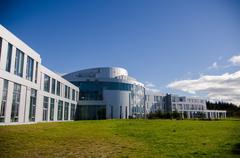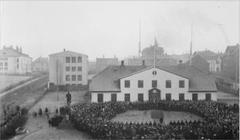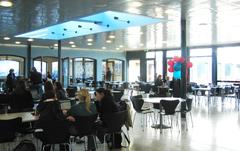Melavöllur Visiting Hours, Tickets, and Historical Sites in Reykjavík
Date: 15/06/2025
Introduction: Melavöllur—Reykjavík’s Living Sporting Heritage
Set amid the energetic cityscape of Reykjavík, Melavöllur is a historic sports ground that has witnessed Iceland’s transformation from a small fishing town to a modern capital. Established in 1911, Melavöllur was Reykjavík’s main football stadium for much of the 20th century. It hosted the nation’s first official international football matches and was the home ground for both major local clubs and the Icelandic national team. Its creation paralleled Reykjavík’s urban development and reflects the city’s aspirations for organized sports, public gathering spaces, and a growing sense of national identity (Grapevine; Wikipedia: Timeline of Reykjavík).
Today, Melavöllur remains a vibrant community venue, open daily with free general admission. Its central location, near the University of Iceland and Tjörnin Lake, makes it a key stop on Reykjavík’s heritage trails. Visitors can explore its modest but authentic facilities, attend local matches or community events, and experience a venue where Icelandic history and everyday life converge (Reykjavík City Journal; Iceland Nordic Visitor).
Table of Contents
- Early Development and Founding
- Visiting Hours and Ticket Information
- How to Visit Melavöllur
- Role in Icelandic Sports and National Identity
- Architectural and Urban Context
- Key Historical Events
- Transition and Legacy
- Preservation and Contemporary Use
- Visitor Tips and Practical Information
- Frequently Asked Questions (FAQ)
- Plan Your Visit: Tips and Nearby Attractions
- References
1. Early Development and Founding of Melavöllur
Melavöllur, located in western Reykjavík, originated from the city’s need for organized sports facilities as the population grew in the early 20th century (Grapevine). The ground, built on the marshy Melar area, opened in 1911 and was Iceland’s largest and most advanced football venue at the time. Its establishment was a milestone in the modernization of Reykjavík and the popularization of football in Iceland (Wikipedia: Timeline of Reykjavík).
2. Melavöllur Visiting Hours and Ticket Information
- Open Hours: Daily, 8:00 AM to 10:00 PM (may vary seasonally; check ahead in winter).
- Admission: Free for general visitors and for most local matches or events.
- Tickets: Special tournaments or larger matches may require tickets, available on-site or via local club websites. Always check event listings before your visit for ticketing information.
3. How to Visit Melavöllur
Melavöllur is a short walk from Reykjavík’s city center, close to the University of Iceland and Tjörnin Lake. Accessible by public bus, taxi, bike, or on foot, it’s easy to reach from most parts of the city. The site features practical Icelandic architecture and accessible pathways, making it suitable for visitors with mobility needs. Basic amenities—restrooms and seating—are available, though facilities retain their traditional character (uni.hi.is).
4. Role in Icelandic Sports and National Identity
Melavöllur played a pivotal role in the rise of Icelandic football and the development of a national sporting identity. It was the main venue for early league games, the Icelandic Cup, and the first official national team matches. The stadium’s capacity allowed for large gatherings during national holidays and significant events, fostering a sense of unity and citywide celebration (Hertz Iceland: Major Events in Iceland).
5. Architectural and Urban Context
The stadium’s design evolved from a simple grass pitch to include basic wooden stands and amenities, mirroring Reykjavík’s architectural trends and resourcefulness. As the city expanded, Melavöllur’s neighborhood developed into a hub for education, recreation, and residential life, reinforcing the stadium’s role as a community landmark (Grapevine).
6. Key Historical Events
- First National Matches: Hosted Iceland’s earliest international fixtures and league finals.
- Icelandic Cup Finals: The site of many dramatic cup finals and celebrations.
- International Friendlies & Civic Events: Venue for international teams, youth tournaments, and community gatherings.
These milestones cemented Melavöllur’s place in Reykjavík’s collective memory and sports culture.
7. Transition and Legacy
With the construction of Laugardalsvöllur in the 1950s, Melavöllur’s prominence declined as major matches shifted to newer venues. However, it remains central to local sports, youth leagues, and community events, preserving its legacy as a grassroots sporting institution (Reykjavík City Museum).
8. Preservation and Contemporary Use
Melavöllur is recognized by local authorities as a heritage site and continues to be maintained for community use. It is integrated into Reykjavík’s urban life, supporting the city’s strategy of blending historical preservation with contemporary needs (Reykjavík Tourism Strategy).
9. Visitor Tips and Practical Information
- Location: Vesturbær district, a 15–20 minute walk from downtown Reykjavík.
- Facilities: Basic restrooms; limited concessions (bring snacks and water).
- Accessibility: Pathways and limited seating for visitors with disabilities—contact the venue for arrangements.
- Weather: Dress in layers and bring rain gear. Weather can change quickly (Weather25).
- Nearby Amenities: Cafés and bakeries in Vesturbær, geothermal swimming pool (Vesturbæjarlaug), Tjörnin Lake, and the National Museum of Iceland.
10. Frequently Asked Questions (FAQ)
Q: What are Melavöllur’s visiting hours?
A: Usually 8:00 AM to 10:00 PM, with shorter hours in winter.
Q: Do I need a ticket to visit Melavöllur?
A: General admission is free. Tickets may be required for special events or matches; check online or at the gate.
Q: Is the stadium wheelchair accessible?
A: There is some accessibility; contact the venue ahead for specific needs.
Q: Are guided tours available?
A: Dedicated tours are rare, but Melavöllur is sometimes included in city walking tours.
Q: Can I bring children?
A: Yes, Melavöllur is family-friendly and often hosts youth events.
11. Plan Your Visit: Tips and Nearby Attractions
- Combine Your Trip: Walk to the National Museum of Iceland, swim at Vesturbæjarlaug, or enjoy the Ægissíða Coastal Path.
- Event Calendar: Check local listings for match and festival schedules (Reykjavík Events Calendar).
- Local Etiquette: Respect the grounds, cheer respectfully, and greet fellow fans with a friendly “hæ.”
- Safety: Reykjavík is very safe, but keep an eye on belongings during events (Lonely Planet).
12. References
- Grapevine: Portrait of a City—Reykjavík Between Legend, History and Tourism
- Wikipedia: Timeline of Reykjavík
- uni.hi.is: Sport in Iceland—How Small Nations Achieve International Success
- Hertz Iceland: Major Events in Iceland
- Reykjavík City Museum: Reykjavík Culture & City
- Reykjavík Tourism Strategy
- Reykjavík City Journal: A Brief History of Reykjavík
- Iceland Nordic Visitor: Information for Travelers
- Lonely Planet: 10 Things to Know Before Traveling to Reykjavík
- Weather25: Reykjavík Weather in June
- Guide to Iceland: Sightseeing in Reykjavík
- Guide to Iceland: Top 10 Things to Do in Reykjavík
- Guide to Iceland: The Best Swimming Pools in Reykjavík
- Iceland Trippers: Iceland Travel Tips
Final Call to Action
To make the most of your visit, download the Audiala app for the latest event schedules, ticket info, and local tips. Follow us on social media for updates on Melavöllur and other Reykjavík historical sites.
Experience a living piece of Icelandic history—visit Melavöllur and become part of Reykjavík’s vibrant community tradition!
